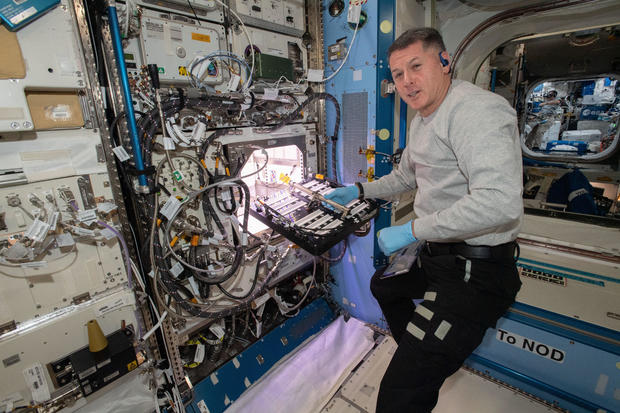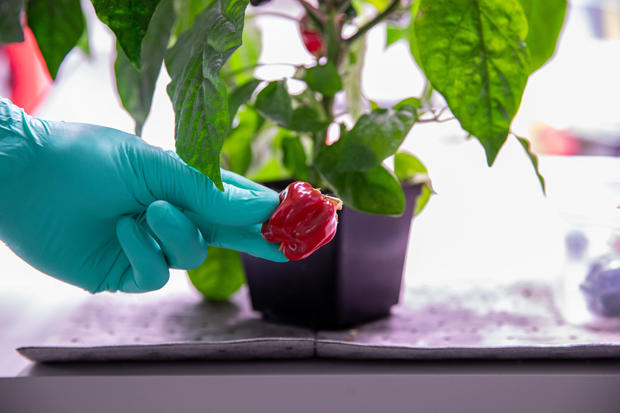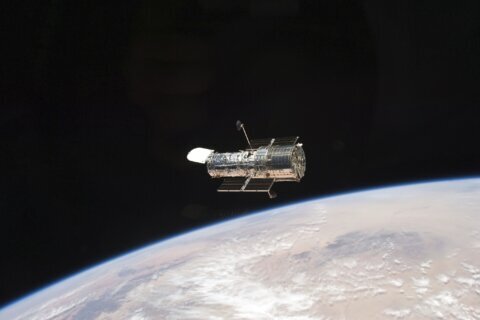▶ Watch Video: SpaceX launches solar arrays and science equipment to space station
Outer space is getting spicier, thanks to a new NASA initiative to add a little more flavor to astronauts’ diets.
NASA announced last week that astronauts aboard the International Space Station are growing red and green chile peppers for the very first time. Hatch chile pepper seeds arrived at the station in June, thanks to a SpaceX commercial resupply services mission.
NASA astronaut Shane Kimbrough, who launched to the ISS in April, initiated the experiment, dubbed Plant Habitat-04 (PH-04). He’s grown plants on the orbiting laboratory before, snacking on “outredgeous” red romaine lettuce in 2016.
A team of researchers at the Kennedy Space Center planted 48 seeds in a device called a science carrier, which has clay for roots to grow in and a specially formulated controlled-release fertilizer. The device slots into the Advanced Plant Habitat, one of three plant growth chambers onboard.
“The APH is the largest plant growth facility on the space station and has 180 sensors and controls for monitoring plant growth and the environment,” said project manager Nicole Dufour. “It is a diverse growth chamber, and it allows us to help control the experiment from Kennedy, reducing the time astronauts spend tending to the crops.”

The peppers will spend about four months growing before they can be harvested and eaten, marking the first time astronauts have cultivated peppers on the station from seeds to maturity. If data indicates the peppers are safe, the crew will eat some of them and send the rest back to Earth for analysis.
“It is one of the most complex plant experiments on the station to date because of the long germination and growing times,” said principal investigator Matt Romeyn. “We have previously tested flowering to increase the chance for a successful harvest because astronauts will have to pollinate the peppers to grow fruit.”
Astronauts grew the first flower on the ISS in 2015 and 2016, the predecessor to longer-duration, fruit-bearing, flowering crops like peppers. The NuMex ‘Española Improved’ pepper, a hybrid Hatch pepper, was selected after more than two years of research into dozens of pepper varieties in search of the perfect space crop.
“The challenge is the ability to feed crews in low-Earth orbit, and then to sustain explorers during future missions beyond low-Earth orbit to destinations including the Moon, as part of the Artemis program, and eventually to Mars,” Romeyn said. “We are limited to crops that don’t need storage, or extensive processing.”

Scientists hope the crop will help to supplement astronauts’ diets on future missions, providing much-needed Vitamin C and other nutrients. Additionally, due to living in microgravity, astronauts can lose some of their sense of taste and smell — upping the demand for spicy or seasoned foods.
“Growing colorful vegetables in space can have long-term benefits for physical and psychological health,” Romeyn said. “We are discovering that growing plants and vegetables with colors and smells helps to improve astronauts’ well-being.”
Researchers will monitor the growth of the peppers and compare them to a control group on Earth. They plan to collect crew feedback on the peppers’ flavor and texture, as well as Scoville measurements.
“The spiciness of a pepper is determined by environmental growing conditions. The combination of microgravity, light quality, temperature, and rootzone moisture will all affect flavor, so it will be interesting to find out how the fruit will grow, ripen, and taste,” said team lead LaShelle Spencer. “This is important because the food astronauts eat needs to be as good as the rest of their equipment. To successfully send people to Mars and bring them back to Earth, we will not only require the most nutritious foods, but the best tasting ones as well.”







